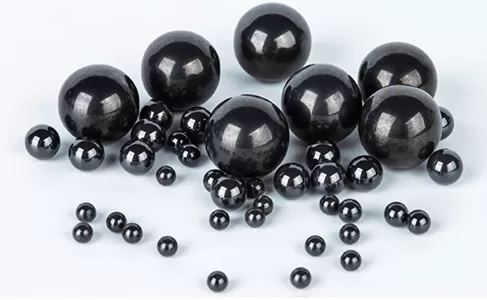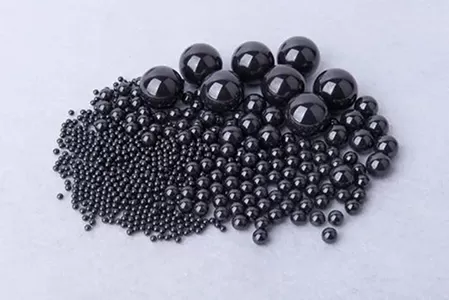The precision requirements for ceramic ball valve balls are critical to ensure tight sealing, smooth operation, and long service life, involving strict standards for diameter tolerance, roundness, surface roughness, and sphericity, tailored to different industrial applications. These precision metrics directly impact the valve’s ability to control fluid flow without leakage, especially in high-pressure or corrosive environments.
Diameter tolerance is a key parameter, typically ranging from ±0.001 mm to ±0.01 mm for high-performance ceramic ball valve balls. This tight tolerance ensures that the ball fits perfectly within the valve seat, preventing fluid bypass. For applications like chemical processing or oil and gas pipelines, where leakage can cause safety hazards or product loss, a tolerance of ±0.005 mm or lower is often required to maintain reliable sealing.

Roundness, measuring how closely the ball’s cross-section approximates a perfect circle, is another vital requirement. Acceptable roundness values are usually between 0.001 mm and 0.005 mm. A non-round ball can lead to uneven wear on the valve seat, reducing sealing efficiency over time. In high-precision systems such as semiconductor manufacturing, where even (trace leakage) is unacceptable, roundness must be controlled within 0.002 mm to ensure optimal performance.

Surface roughness, quantified by Ra (arithmetic mean deviation), is strictly regulated to minimize friction and enhance sealing. Ceramic ball valve balls typically require an Ra value between 0.02 μm and 0.1 μm. A smoother surface reduces wear between the ball and seat during operation, extending the valve’s lifespan. In applications involving abrasive fluids, a surface roughness of Ra 0.05 μm or lower helps prevent particle buildup, maintaining consistent flow control.
Sphericity, the degree to which the ball deviates from a perfect sphere, is critical for uniform contact with the valve seat. Sphericity tolerances are generally set between 0.002 mm and 0.01 mm. Poor sphericity can result in uneven pressure distribution across the seat, leading to localized wear and potential leakage. For high-pressure valves operating above 10 MPa, sphericity must be within 0.005 mm to withstand intense pressure without compromising sealing.
Material selection also influences precision achievable. Zirconia and alumina ceramics, known for their high hardness and dimensional stability, are preferred for meeting tight precision requirements. Silicon nitride ceramics, with excellent thermal shock resistance, are used in high-temperature valve applications where maintaining precision under heat is essential.
Manufacturing processes such as precision grinding and lapping are employed to achieve these strict tolerances. Post-processing inspection using advanced tools like coordinate measuring machines (CMMs) and laser profilometers ensures each ball meets the specified precision standards before assembly.
In summary, the precision requirements for ceramic ball valve balls are stringent and application-specific, with tight controls on diameter, roundness, surface roughness, and sphericity. Adhering to these standards ensures the valves perform reliably in diverse industrial settings, from chemical plants to high-tech manufacturing facilities.



